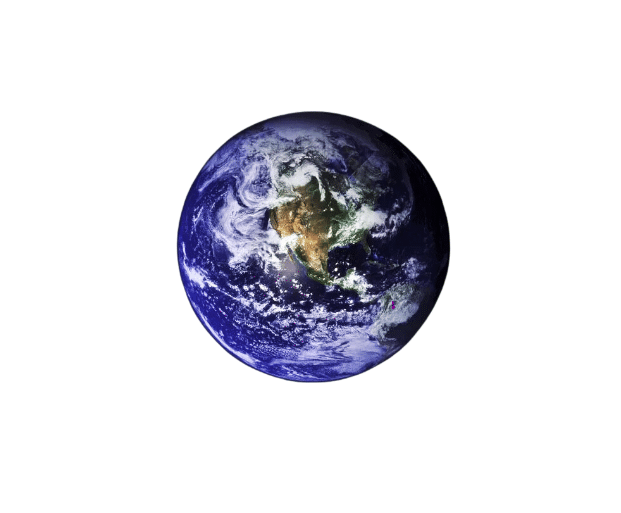Earth is the largest of the terrestrial planets. It is covered 71% by seas and oceans, earning it the name “Blue Planet.” Earth is the only known planet where water exists in all three states: solid, liquid, and gas, a key factor in the development of life.
A single moon orbits Earth at a distance of 384,000 km. Due to synchronous rotation, the Moon always shows the same face to Earth.

| Caractéristiques | Terre | Lune |
| Diamètre | 12 100 km | 3 475 km |
| Rapport de masse | 1 | 1/81 |
| Rapport de gravité | 1 | 1/6 |
| Distance de soleil (UA) | 1 | |
| Inclinaison / Axe de rotation | 23,5° | 5,1° |
| Période de rotation | 1 j | 27,3 j |
| Révolution autour du soleil | 1 an | |
| Température max | +58°C | +123°C |
| Température min | -89°C | -248°C |
| Lunes | 1 |
The formation of Earth is a process that dates back about 4.6 billion years.
The creation of planet Earth is a fascinating topic in astronomy and Earth sciences. Here is an overview of Earth’s formation process:
- Formation of the Solar System: Earth formed about 4.5 billion years ago from a disk of gas and dust surrounding a young star called the Sun. This formation process is known as the solar nebula.
- Accretion of Matter: Dust particles in the protoplanetary disk gradually attracted each other due to gravity, forming increasingly larger aggregates called planetesimals. These planetesimals then combined to form protoplanets, which eventually evolved into the planets of the solar system, including Earth.
- Differentiation: As Earth grew, denser materials, such as metals, began to settle towards the core, while less dense materials remained near the surface. This process, called differentiation, led to the formation of Earth’s layered internal structure, with a core made of iron and nickel, a rocky mantle, and an outer crust.
- Formation of the Atmosphere and Oceans: As Earth formed, gases such as carbon dioxide, water vapor, ammonia, and methane were trapped in its primitive atmosphere. As Earth’s surface cooled, the water vapor condensed to form oceans.
- Cooling and Stabilization: Over time, Earth cooled, and geological processes such as plate tectonics, volcanism, and erosion shaped its surface. The planet also acquired a more stable atmosphere, mainly composed of nitrogen and oxygen.
The creation of Earth was a complex process that took hundreds of millions of years. It involved phenomena such as accretion of matter, differentiation, formation of the atmosphere and oceans, and continuous geological processes that continue to shape our planet today.
Earth is 71% covered by seas and oceans, earning it the nickname “Blue Planet.”
It is also the only known planet where water exists in all three states: solid, liquid, and gas, which has been essential for the development of life.
Earth is the third planet from the Sun and the fifth largest in the solar system (diameter 12,713.504 km).
It orbits the Sun in 365.256 solar days and rotates on its axis in a sidereal day (≈ 23 hours 56 minutes). Its axis of rotation has an inclination of 23°, generating seasons. For more information, you can consult the following websites:
